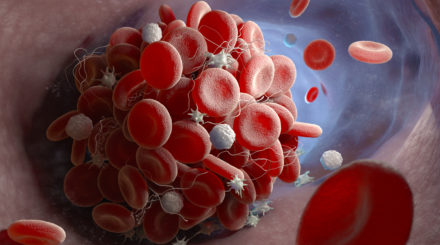Journal Club ‘Gastroprotectants in cats’ (19/09/2024)
Our journal club sessions are a great way for our Specialists to bring new and interesting scientific papers for discussion with our vtx community. In this session, the theme of…
Journal Club ‘Haematology & Transfusion medicine in dogs’ (19/12/24)
Our journal club sessions are a great way for our Specialists to bring new and interesting scientific papers for discussion with our vtx community. In this session, the theme of…
Journal Club ‘Immune mediated disease’ (22/05/25)
Our journal club sessions are a great way for our Specialists to bring new and interesting scientific papers for discussion with our vtx community. In this session, the theme of…
Journal Club ‘Internal Medicine’ (20/06/25)
Our journal club sessions are a great way for our Specialists to bring new and interesting scientific papers for discussion with our vtx community. In this session, the theme of…
Our journal club sessions are a great way for our Specialists to bring new and interesting scientific papers for discussion with our vtx community. In this session, the theme of…
Our journal club sessions are a great way for our Specialists to bring new and interesting scientific papers for discussion with our vtx community. In this session, the theme of…
Our journal club sessions are a great way for our Specialists to bring new and interesting scientific papers for discussion with our vtx community. In this session, the theme of…
Leptospirosis in dogs and cats in a puddle near you?
This case-based webinar will summarize and communicate key clinical signs and practical management (diagnosis, therapy, prevention) tips related to Leptospira spp. exposure and infection in dogs and cats. By the end of…
Les fibres alimentaires redécouvertes – apports bénéfiques dans le traitement des maladies digestives du chien
Ce webinaire passera en revue les avantages des fibres alimentaires dans la gestion des maladies gastro-intestinales aiguës et chroniques chez les chiens – un « sujet brûlant » en gastroentérologie…
Nursing the renal patient
Patients with renal disease, both acute and chronic, make up a large percentage of veterinary caseload; it is important that the clinic is educated in gold standard care to increase…
Pancreatitis… What the feline is new?
Pancreatitis in cats, although commonly diagnosed, still presents many diagnostic and management challenges. Accurate diagnosis of pancreatitis in cats requires the combination of history and clinical findings, diagnostic imaging, laboratory…
Plasma products… and their various uses in practice
In this lecture we will review the various types of plasma products available in clinical practice, alongside why we should consider choosing one product over the other. This will involve…
Practical use of anti-thrombotics
This webinar explores the use of anti-thrombotic medication in dogs and cats including the conditions in which they are indicated, alongside the preferred medication, dose, and frequency. The use of…
Proteinuria…The Medical Unicorn
The investigation and management of proteinuria in dogs and cats can be challenging. Proteinuria can be a consequence of many disease processes, but it can also be found as an…
Roundtable Panel Discussion ‘Feline Infectious peritonitis’ (11/09/25)
Join Scott Kilpatrick and Samantha Taylor for an engaging live Specialist panel discussion session. This session will focus on ‘The Latest in Feline Infectious Peritonitis (FIP) Management’. FIP remains a…
The Green Patient: An Approach to Gastrointestinal Disease in Dogs & Cats
Is gastrointestinal disease leaving you feeling green? This practical and case-focused webinar explores a structured, problem-solving approach to both acute and chronic alimentary disorders in dogs and cats. From common…
The renal truth: Caring for your kidney patient
Renal disorders are some of the most common conditions we encounter in practice, and as veterinary nurses, we play a vital role in the care of these patients. This webinar…
The Yellow Patient: An Approach to Liver Disease in Dogs and Cats
Is hyperbilirubinemia getting you down? This insightful live webinar explores a logical approach to investigating liver disease in small animals. We’ll focus on diagnostic tests, non-hepatic causes of test changes,…
Travelling light? Approach to the imported dog (Part 1)
There has been a huge increase in the number of imported dogs entering the UK over the last few years. As a result, vets in practice are being faced with…
Travelling light? Approach to the imported dog (Part 2)
The UK has seen a large increase in the number of imported dogs over the last few years. These dogs often bring with them some unusual diseases that vets in…





















